Ethical Experiments
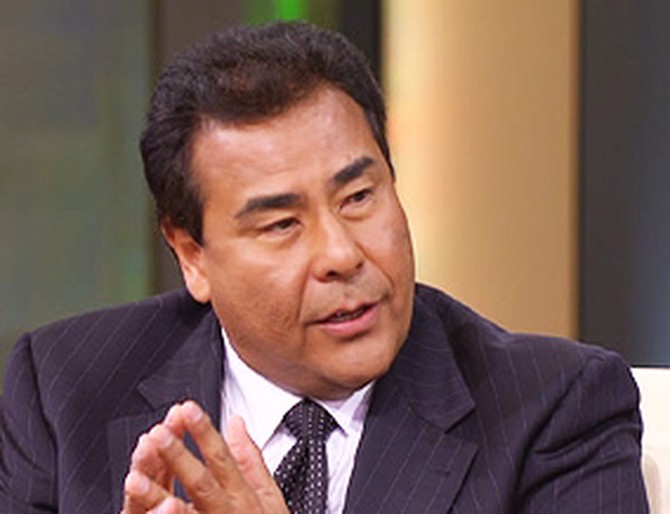
If you mistakenly receive too much change from a cashier, would you return it? How would you handle an obnoxious cell phone user or a waitress who shamelessly flirts with your boyfriend? With the help of actors and hidden cameras, these moral dilemmas are captured on film in What Would You Do?, a provocative series from ABC's Primetime. While some of the undercover experiments end in laughter, others tackle tough issues like abuse, racism and crime. No matter what the scenario, an interesting conversation always follows when real people are put to the test.
Veteran news correspondent John Quiñones sees it all while waiting in the wings. He gets a firsthand look at what happens when people think nobody's watching—and it's not always pretty. "I've gotten to see very inspiring folks who do the right thing and then others who just walk away from situations," he says. "It's allowed me to put myself in the position of the victim. And once you do that, it's hard to turn away from a person in distress, a person in need, a person in trouble."
Veteran news correspondent John Quiñones sees it all while waiting in the wings. He gets a firsthand look at what happens when people think nobody's watching—and it's not always pretty. "I've gotten to see very inspiring folks who do the right thing and then others who just walk away from situations," he says. "It's allowed me to put myself in the position of the victim. And once you do that, it's hard to turn away from a person in distress, a person in need, a person in trouble."
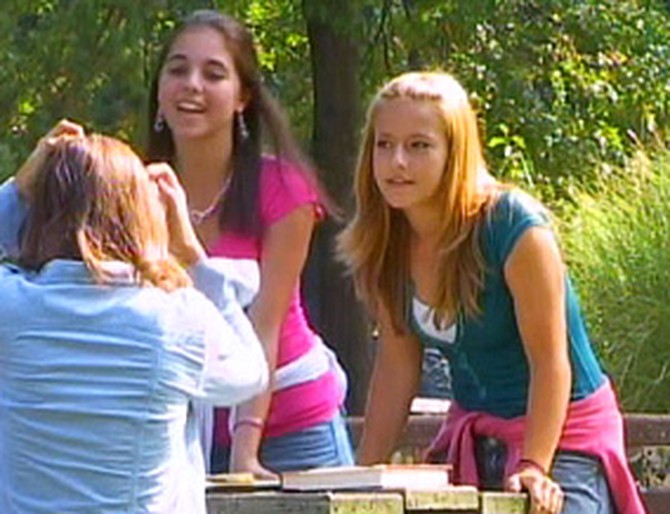
The first What Would You Do? scenario involves a traumatizing right of passage experienced by many teenagers. Three mean girls torment and taunt another girl in a public park. "You are such a loser, Katherine," they say. "You don't have any friends." The girls are actors, but the men and women strolling through the park have no idea. What do they do?
While many of the men who observe the scene simply keep walking, John notes that many women feel obligated to stop. One after another, women step up to give the mean girls a piece of their minds. Two strangers even work in tandem—one comforts the victim while the other sets the mean girls straight. Although the actors were told to keep their language clean, some of the women who stop have no qualms about cursing and even revert to mean girls themselves by mocking the girls.
While many of the men who observe the scene simply keep walking, John notes that many women feel obligated to stop. One after another, women step up to give the mean girls a piece of their minds. Two strangers even work in tandem—one comforts the victim while the other sets the mean girls straight. Although the actors were told to keep their language clean, some of the women who stop have no qualms about cursing and even revert to mean girls themselves by mocking the girls.
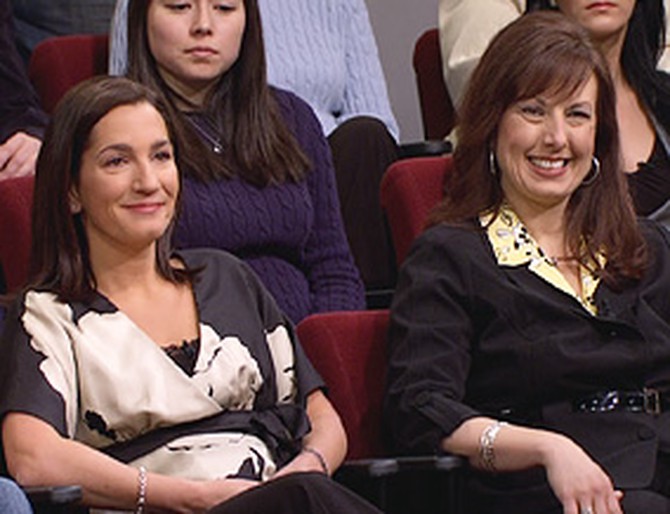
Lisa and Maggie are two of the women who stop to confront the mean girls. "It was a quiet day in the park, and you just see this girl being tormented," Lisa says. "Things were being thrown—her books were being thrown on the ground; they were being thrown at her. The girls were right up on top of her and really just harassing her."
At first, Maggie walked away from the situation because she had children with her. Once they were safe, she went back to intervene. "My friend called security, and then I went back to try to stop the yelling," she says. "I was scared for the girl. I thought they might punch her or hit her or slap her."
Maggie feels she did the right thing by getting involved but in hindsight may have toned it down. "I think under a microscope I'm a little embarrassed," she says. "Maybe I should have been calmer, but it's who I am."
At first, Maggie walked away from the situation because she had children with her. Once they were safe, she went back to intervene. "My friend called security, and then I went back to try to stop the yelling," she says. "I was scared for the girl. I thought they might punch her or hit her or slap her."
Maggie feels she did the right thing by getting involved but in hindsight may have toned it down. "I think under a microscope I'm a little embarrassed," she says. "Maybe I should have been calmer, but it's who I am."

Dr. Carrie Keating, a psychology professor at Colgate University and a regular expert on What Would You Do?, says this experiment shows the empathy women feel for the victim. "You could see from their body language they had been there, done that somewhere in their past lives," she says. "There's nothing like body language to stimulate emotions and feelings that we don't even know that we have. So somewhere, sometime you've seen somebody who's been teased brutally this way, and women, I think, in particular recognize it hurts."
Lisa agrees and says she remembers being bullied in junior high school. "I definitely felt like that girl that was sitting there at the bench," she says.
John thinks the reason more women stepped in than men could be because they didn't want the fight to become physical. "That might be just an excuse, but men will tell you, 'If I step in, it could well lead to fisticuffs,'" he says. However, Dr. Keating says many women feel that words can hurt more than fists.
"Words hurt for a long, long time. Longer than a bruise," she says. "It's fascinating that boys' aggression may involve fisticuffs, may involve physical aggression. But really, the lasting mental impression is just as important because what you're learning from that kind of an episode is that you're powerless, you're rejected, and that affects how we feel about ourselves."
Lisa agrees and says she remembers being bullied in junior high school. "I definitely felt like that girl that was sitting there at the bench," she says.
John thinks the reason more women stepped in than men could be because they didn't want the fight to become physical. "That might be just an excuse, but men will tell you, 'If I step in, it could well lead to fisticuffs,'" he says. However, Dr. Keating says many women feel that words can hurt more than fists.
"Words hurt for a long, long time. Longer than a bruise," she says. "It's fascinating that boys' aggression may involve fisticuffs, may involve physical aggression. But really, the lasting mental impression is just as important because what you're learning from that kind of an episode is that you're powerless, you're rejected, and that affects how we feel about ourselves."

What would you do if an act of racism took place in front of you?
For the next scenario, the What Would You Do? crew heads to a roadside bakery in Texas for an experiment on prejudice and patriotism. Both workers behind the counter are actors. When a Muslim actress comes into the store, the male clerk verbally assaults her. "You've got to take your business elsewhere. We don't serve your kind here," he says. "Get back on the camel and go back wherever you came from." While the Muslim woman continues to be assaulted with blatant bigotry, several customers in the bakery barely look up.
When no one will speak up for her, the Muslim woman asks another customer if he will order an apple strudel for her. The man stumbles over his words, reluctant to help. After leaving the bakery, John approaches the customer to see why he wouldn't step in. "Me, speak up for her?" he says. "Well, if he would try to do some harm to her or something, then I would have."
Other customers in the bakery not only ignore the Muslim woman, but they actually applaud the racist clerk. "Hooray for you," one man says. "I think that's the first time I've ever seen that. Good job. Appreciate it."
For the next scenario, the What Would You Do? crew heads to a roadside bakery in Texas for an experiment on prejudice and patriotism. Both workers behind the counter are actors. When a Muslim actress comes into the store, the male clerk verbally assaults her. "You've got to take your business elsewhere. We don't serve your kind here," he says. "Get back on the camel and go back wherever you came from." While the Muslim woman continues to be assaulted with blatant bigotry, several customers in the bakery barely look up.
When no one will speak up for her, the Muslim woman asks another customer if he will order an apple strudel for her. The man stumbles over his words, reluctant to help. After leaving the bakery, John approaches the customer to see why he wouldn't step in. "Me, speak up for her?" he says. "Well, if he would try to do some harm to her or something, then I would have."
Other customers in the bakery not only ignore the Muslim woman, but they actually applaud the racist clerk. "Hooray for you," one man says. "I think that's the first time I've ever seen that. Good job. Appreciate it."

The experiment continues over the next five hours, and many other customers ignore the racism going on in front of them—but a few refuse to stay silent. When one offended man threatens to leave the store, the actor behind the counter tells him he's a bad American. "I believe I am a good American," he says. "My son just came back from serving in the army for over a year in Iraq, and that has nothing to do with her rights."
Of all of the customers who speak up, the most persistent are two women named Alison and Jasmeen. "You're really offensive and disgusting," Alison says. Jasmeen is not dressed in traditional clothes but points out that she is also Muslim. "She is my culture," she says. "So you're ready to serve me, but you're not ready to serve her?" Instead of leaving in anger, the women stand their ground and ask to speak with a manager.
Of all of the customers who speak up, the most persistent are two women named Alison and Jasmeen. "You're really offensive and disgusting," Alison says. Jasmeen is not dressed in traditional clothes but points out that she is also Muslim. "She is my culture," she says. "So you're ready to serve me, but you're not ready to serve her?" Instead of leaving in anger, the women stand their ground and ask to speak with a manager.

By the end of this experiment, six people side with the bigoted clerk and 13 people stand up for the Muslim woman. The other 22 bystanders say absolutely nothing.
Although Alison wasn't afraid to speak up, she's shocked that other customers refused to come to the woman's aid. "Some of my closest friends are Middle Eastern, and it's horrible to see the kind of discrimination they experience on a regular basis," she says. "I think this country can do better than that."
John says this experiment also struck a nerve with him. After approaching one of the men who supported the racist clerk, John says the man told him, "John Quiñones, you are not an American."
"My family's been in Texas for six generations, and it reminded me of what my Mexican father used to tell me," John says. "He used to pick cotton in South Texas. He said there used to be signs in some of the restaurants [saying,] 'No Mexicans or dogs allowed inside.' Unfortunately, some of those remnants are still there."
Although Alison wasn't afraid to speak up, she's shocked that other customers refused to come to the woman's aid. "Some of my closest friends are Middle Eastern, and it's horrible to see the kind of discrimination they experience on a regular basis," she says. "I think this country can do better than that."
John says this experiment also struck a nerve with him. After approaching one of the men who supported the racist clerk, John says the man told him, "John Quiñones, you are not an American."
"My family's been in Texas for six generations, and it reminded me of what my Mexican father used to tell me," John says. "He used to pick cotton in South Texas. He said there used to be signs in some of the restaurants [saying,] 'No Mexicans or dogs allowed inside.' Unfortunately, some of those remnants are still there."
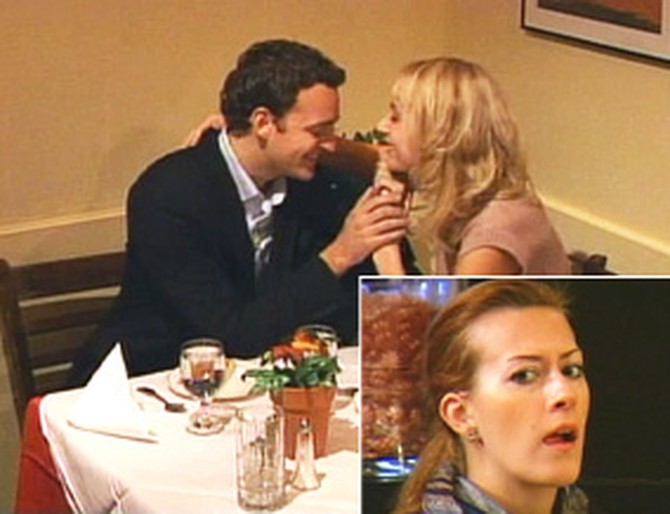
What would you do if you saw your best friend's significant other on a date with someone else?
The crew sets up in New York's Greenwich Village, where David and Mary Ellen, a devoted couple of four years, live together. David and Mary Ellen are both in on the experiment—but Mary Ellen's best friend, Kiley, is not.
David and an actress pretending to be his date are shown to a cozy table in an Italian restaurant just before Kiley takes her seat in the same restaurant. Thanks to a strategically placed mirror, Kiley has a clear view of David and his date. At first, Kiley insists to her friend that the man they see can't be David...but after time, she can no longer deny it. Kiley decides to send a warning text to David: "If it is you, I am here and Mary Ellen is on her way."
As part of the plan, David and the actress are told to look embarrassed and leave the restaurant.
The crew sets up in New York's Greenwich Village, where David and Mary Ellen, a devoted couple of four years, live together. David and Mary Ellen are both in on the experiment—but Mary Ellen's best friend, Kiley, is not.
David and an actress pretending to be his date are shown to a cozy table in an Italian restaurant just before Kiley takes her seat in the same restaurant. Thanks to a strategically placed mirror, Kiley has a clear view of David and his date. At first, Kiley insists to her friend that the man they see can't be David...but after time, she can no longer deny it. Kiley decides to send a warning text to David: "If it is you, I am here and Mary Ellen is on her way."
As part of the plan, David and the actress are told to look embarrassed and leave the restaurant.
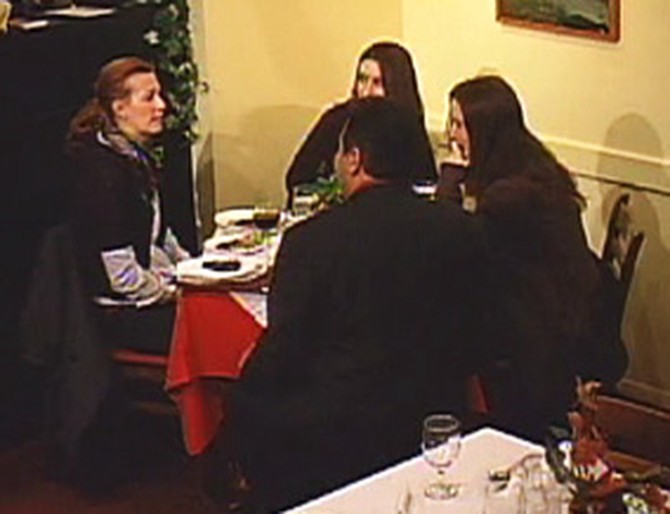
After David leaves, Kiley steps out of the restaurant to call her mother for advice. Shortly after she returns, Mary Ellen—who is in on the experiment—arrives.
Kiley's moment of truth is here. "Mary, we have to talk to you," she says. "When we got here, David was here with someone else."
Though Mary Ellen reacts in disbelief, Kiley stands her ground. "I knew it was him because I texted him, and I saw him take out his phone," she says. "The look on his face said, 'I have to get out of here right now.'"
Finally, John Quiñones reveals the truth to Kiley, telling her the scenario was staged and that she's been a part of an experiment about cheating.
Kiley's moment of truth is here. "Mary, we have to talk to you," she says. "When we got here, David was here with someone else."
Though Mary Ellen reacts in disbelief, Kiley stands her ground. "I knew it was him because I texted him, and I saw him take out his phone," she says. "The look on his face said, 'I have to get out of here right now.'"
Finally, John Quiñones reveals the truth to Kiley, telling her the scenario was staged and that she's been a part of an experiment about cheating.
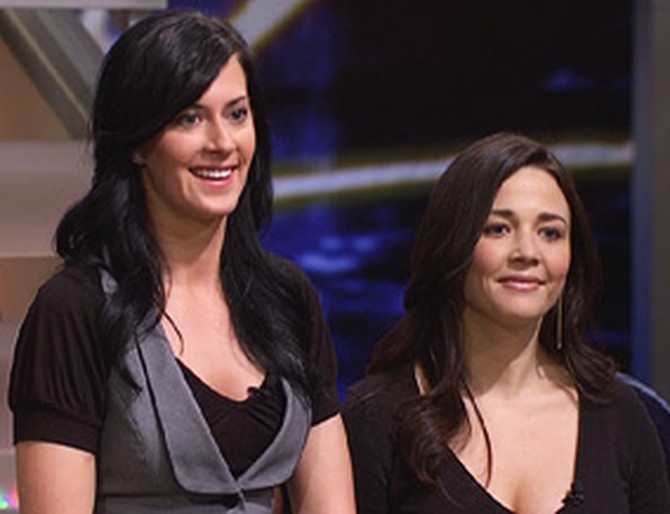
Despite the momentary anxiety the experiment created for Kiley, she and Mary Ellen say they're still best friends. "The fact that it was for a moral program, plus the relief that it wasn't true and we didn't have to move forward from that negative place, overrode her being upset with me," Mary Ellen says.
Kiley says she knew right away that she was going to have to tell Mary Ellen about David's cheating, but she didn't necessarily know when or how. "But when [Mary Ellen] got there and it came down to it, I just couldn't keep it in," she says. "It was an emotional roller coaster."
Dr. Keating says that because Mary Ellen and Kiley are such close friends, Kiley felt burdened by the bad news she had to share. "In this situation, it might be useful to ask yourself which mistake you would rather make," she says. "Would you rather tell the truth and have it be painful? Or would you rather cloak the truth and perhaps undermine the intimacy you have in your friendship?"
Kiley says she knew right away that she was going to have to tell Mary Ellen about David's cheating, but she didn't necessarily know when or how. "But when [Mary Ellen] got there and it came down to it, I just couldn't keep it in," she says. "It was an emotional roller coaster."
Dr. Keating says that because Mary Ellen and Kiley are such close friends, Kiley felt burdened by the bad news she had to share. "In this situation, it might be useful to ask yourself which mistake you would rather make," she says. "Would you rather tell the truth and have it be painful? Or would you rather cloak the truth and perhaps undermine the intimacy you have in your friendship?"
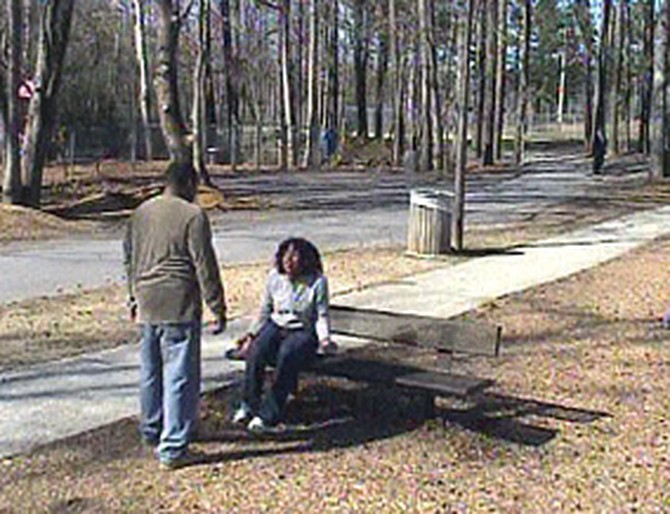
What would you do if you witnessed a man verbally abusing his wife or girlfriend in public, and it was clear the situation was escalating?
Two actors spend an entire day in the park recreating this scenario. During the five-hour experiment, many people ask the couple to "take it somewhere else," but only one of 58 bystanders stop to take the woman to safety.
Two actors spend an entire day in the park recreating this scenario. During the five-hour experiment, many people ask the couple to "take it somewhere else," but only one of 58 bystanders stop to take the woman to safety.
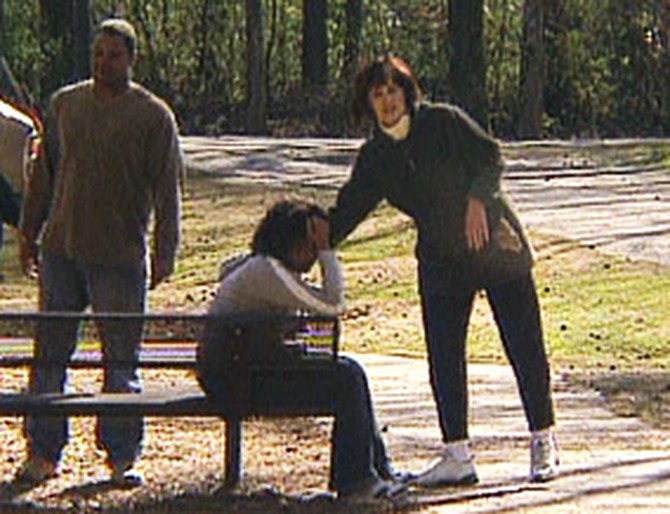
Tammy Billups is the one person who made sure the woman in the park was safe. In these types of scenarios, John says, it is almost always women who stop to help.
"I didn't see a choice," Tammy says. "In my mind, it was something I had to do."
After Tammy learned the fight between the couple was a staged experiment, she wrote an e-mail to Oprah explaining her decision to intervene. "I've come to realize that when I don't walk through my fears to do what I believe is the right thing, I actually feel worse because I will beat myself up about it for days, weeks, maybe longer," Tammy wrote. "When I am able to face my fears, I feel better about not only myself but the outcome of the action."
"I didn't see a choice," Tammy says. "In my mind, it was something I had to do."
After Tammy learned the fight between the couple was a staged experiment, she wrote an e-mail to Oprah explaining her decision to intervene. "I've come to realize that when I don't walk through my fears to do what I believe is the right thing, I actually feel worse because I will beat myself up about it for days, weeks, maybe longer," Tammy wrote. "When I am able to face my fears, I feel better about not only myself but the outcome of the action."
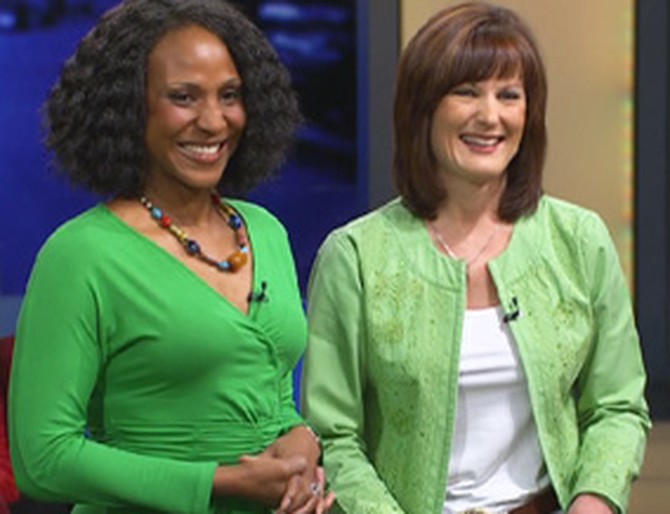
Karen is the actress who played the abused woman in the park, and she says Tammy's bravery moved her to tears. "Initially, as an actor, I can separate myself from my roles. But after five hours of being berated, no one stopped. It was impossible to separate myself from this role I was playing," Karen says. "When [Tammy] stopped, she was the first person that saw that I was a person in distress and not 'these people in our park.'"
According to John, bystanders react differently in this scenario depending on the race of the couple. "We've tried this with white couples before, and we never heard people say, 'Take it somewhere else,'" he says. "They told the African-American couple, 'Look, this is neither the time nor the place.' In other words, 'It's okay if you beat her in the privacy of your home.'" John also says bystanders are more reluctant to stop when the abuser is African-American.
According to John, bystanders react differently in this scenario depending on the race of the couple. "We've tried this with white couples before, and we never heard people say, 'Take it somewhere else,'" he says. "They told the African-American couple, 'Look, this is neither the time nor the place.' In other words, 'It's okay if you beat her in the privacy of your home.'" John also says bystanders are more reluctant to stop when the abuser is African-American.
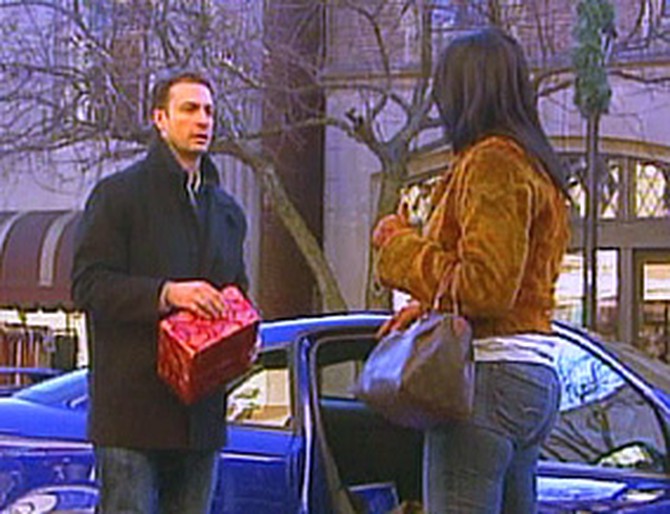
Would you intervene if you saw an obviously drunken stranger about to get behind the wheel?
On a busy street in a New Jersey suburb, many people try to stop Jake, an apparently drunken man, from getting in the car. When Jake, who is really an actor hired by What Would You Do?, says he needs to get to a party, bystanders threaten to call the police and plead with him not drive.
One woman—another complete stranger—invites Jake to get a cup of coffee in order to get him off the road. When she sees a child's car seat in his backseat, she uses a personal memory to appeal to him. "I have a son who's 27 years old," she says. "His father was murdered when he was 9 years old. Every day, I wake up and it hurts that my child had to grow up without a father. Do you want that?"
On a busy street in a New Jersey suburb, many people try to stop Jake, an apparently drunken man, from getting in the car. When Jake, who is really an actor hired by What Would You Do?, says he needs to get to a party, bystanders threaten to call the police and plead with him not drive.
One woman—another complete stranger—invites Jake to get a cup of coffee in order to get him off the road. When she sees a child's car seat in his backseat, she uses a personal memory to appeal to him. "I have a son who's 27 years old," she says. "His father was murdered when he was 9 years old. Every day, I wake up and it hurts that my child had to grow up without a father. Do you want that?"
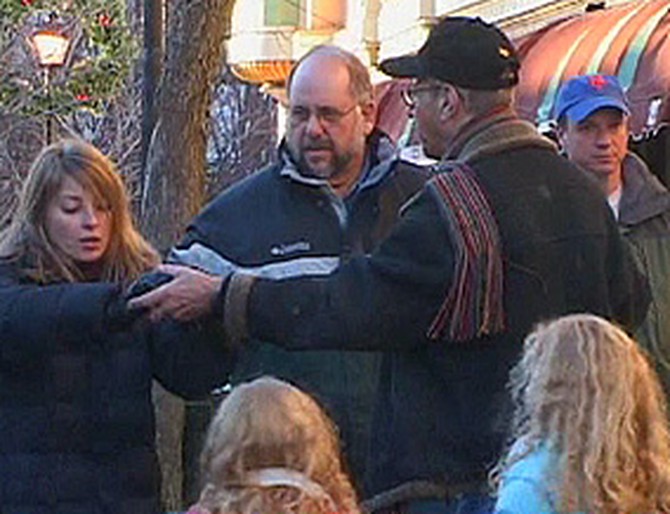
When Jake is replaced with an actress playing a drunken mother about to drive with her two kids in the car, an entire group of strangers works together to stop her. One man takes her car keys while another calls the police.
Dr. Keating says this experiment is especially telling because it proves there is strength in numbers. "It shows teamwork and how incredibly powerful you can be if you have a plan. Taking the keys away was a great idea," she says. "When one person in a room responds, the others say, 'Yes, we need to do something.'"
Dr. Keating says this experiment is especially telling because it proves there is strength in numbers. "It shows teamwork and how incredibly powerful you can be if you have a plan. Taking the keys away was a great idea," she says. "When one person in a room responds, the others say, 'Yes, we need to do something.'"
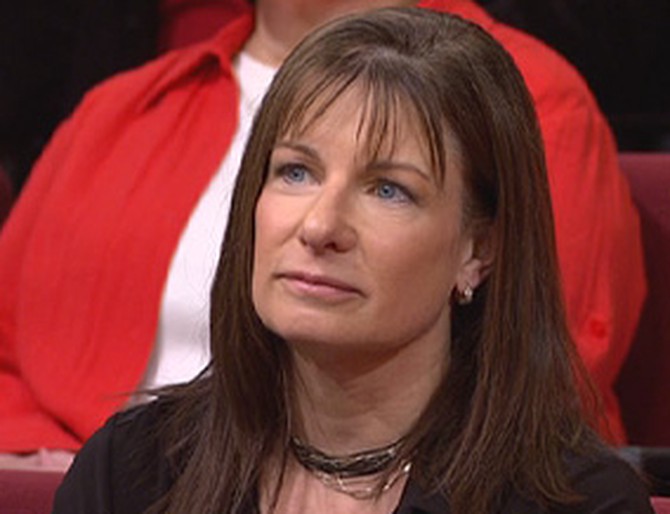
According to Dr. Keating, there are two determining factors in whether someone will intervene. "One of the first things you have to do before you intervene is take personal responsibility. It's risky. It's costly. It can cause embarrassment. ... In Tammy's case, you might really endanger yourself physically," she says.
The second factor, Dr. Keating says, is empathy. "When you empathize with the victim of aggression, it creates a whole different reason for you to take responsibility and try to do something," she says. "Unfortunately, the psychology of human beings is often that if we perceive someone to be different from ourselves, we treat them differently and oftentimes unfairly."
The second factor, Dr. Keating says, is empathy. "When you empathize with the victim of aggression, it creates a whole different reason for you to take responsibility and try to do something," she says. "Unfortunately, the psychology of human beings is often that if we perceive someone to be different from ourselves, we treat them differently and oftentimes unfairly."
Published 01/01/2006

